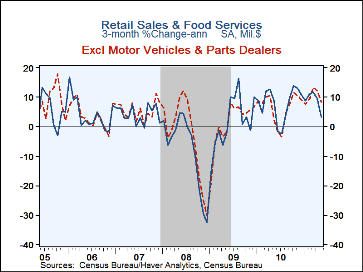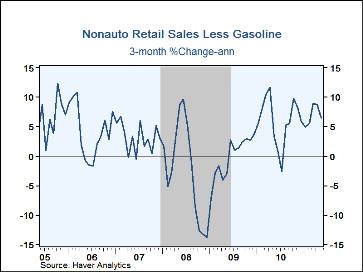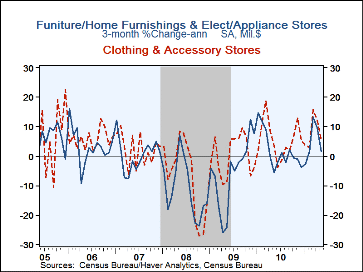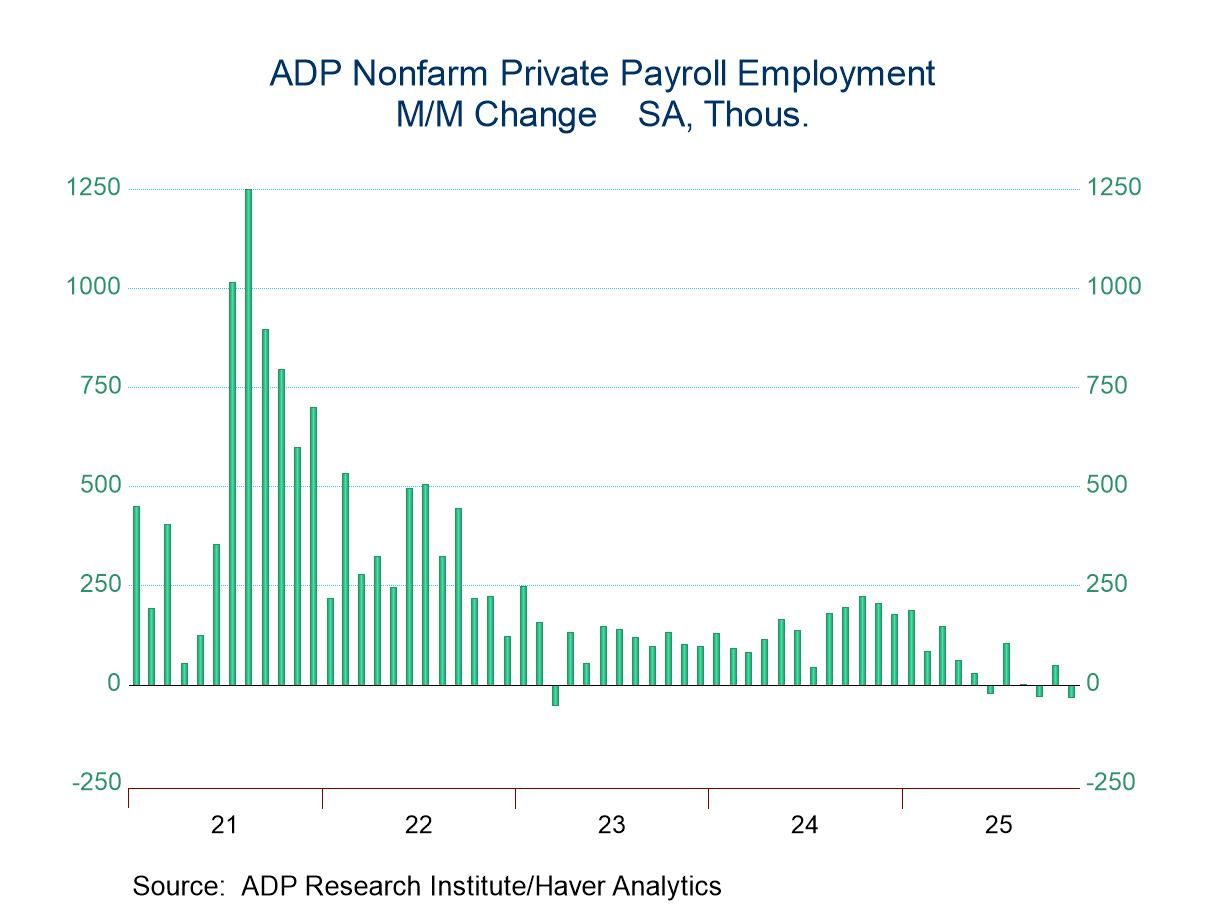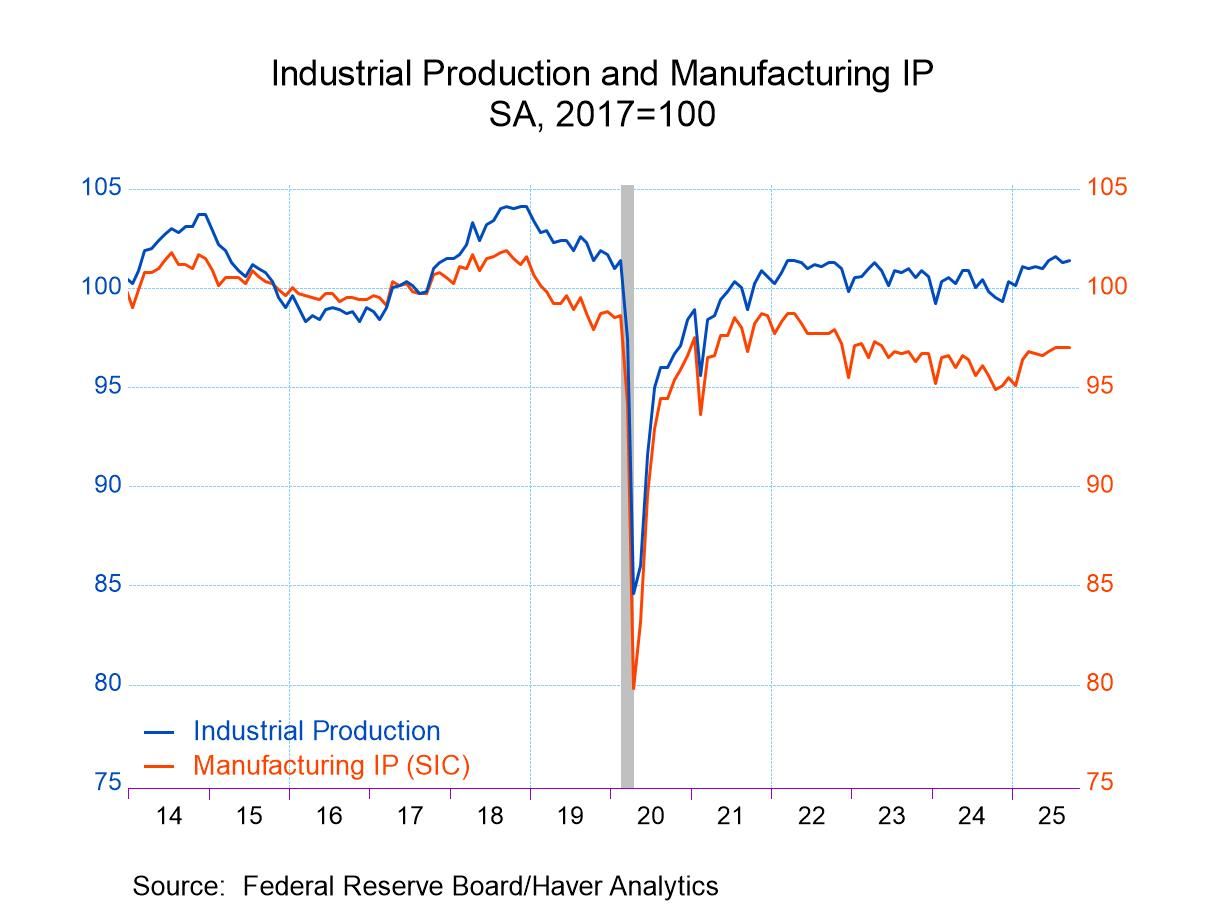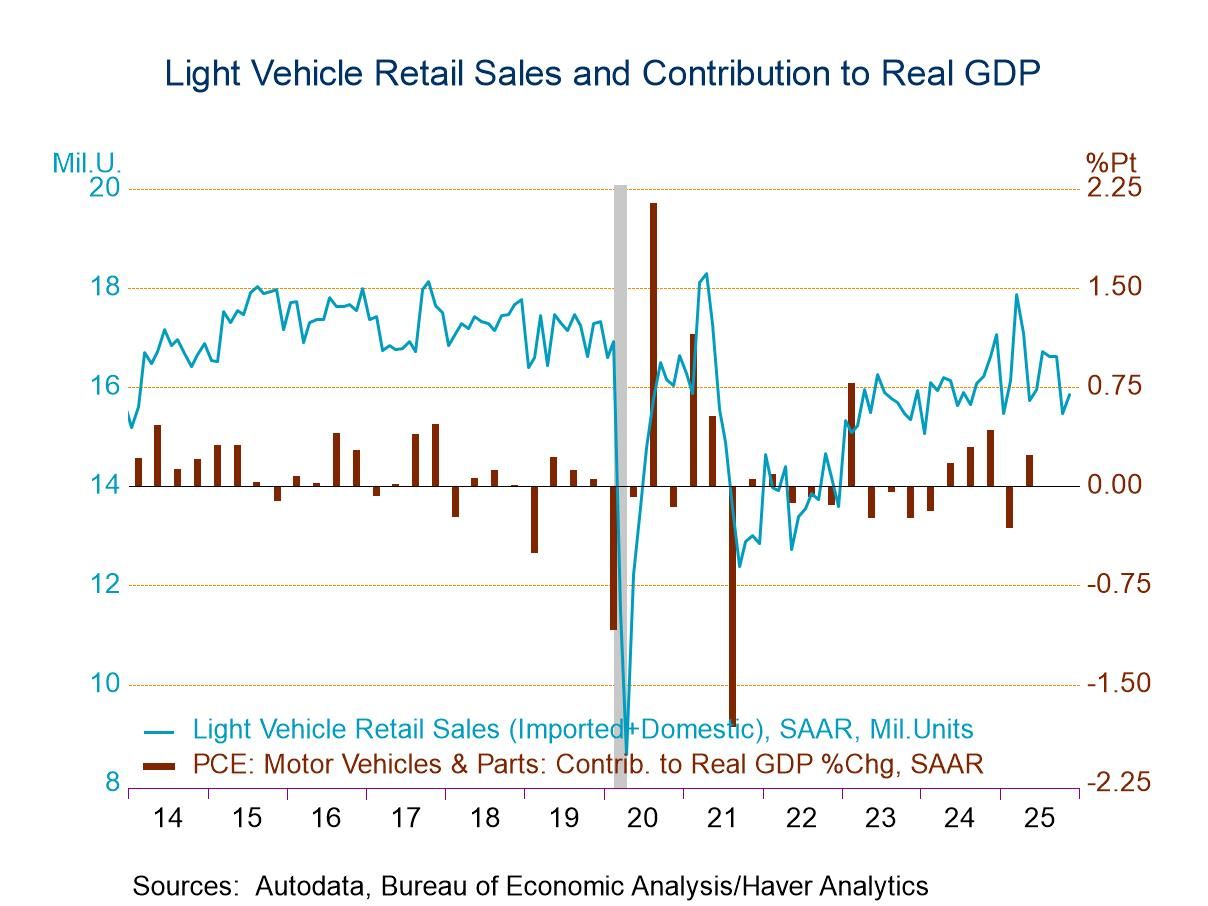 Global| Jun 14 2011
Global| Jun 14 2011U.S. Retail Sales Slip Due To Autos
by:Tom Moeller
|in:Economy in Brief
Summary
Total retail & food service sales slipped 0.2% last month after a 0.3% April increase and a 0.8% March gain, both revised down slightly from 0.5% and 0.9%, respectively. The May decline roughly matched Consensus expectations for a [...]
Total retail & food service sales slipped 0.2% last month after a 0.3% April increase and a 0.8% March gain, both revised down slightly from 0.5% and 0.9%, respectively. The May decline roughly matched Consensus expectations for a 0.3% drop, according to the Action Economics survey. During the last three months, sales rose at a 3.2% annual rate versus a 6.4% increase during all of last year. Excluding autos, sales rose an expected 0.3% last month after a downwardly 0.5% April gain. During the last three months, nonauto sales rose at an 8.4% annual rate after a 5.7% increase last year.
The recent down-drift in gasoline prices held back the rise in expenditures on gas to 0.3% (22.3% y/y). In addition, supply disruptions due to the earthquake & tsunami in Japan held back spending on motor vehicles & parts. The 2.9% May decline followed a 0.7% April decline. Excluding gasoline and autos, retail spending rose 0.3% last month, its weakest gain of the year. Three-month growth in sales excluding autos & gasoline fell to 6.5%.
Discretionary spending showed widespread easing. Sales of furniture, home furnishings and appliances fell 1.0% and three month growth fell to just 1.6%. May sales at furniture stores fell 0.7% (+0.4% y/y) while sales at electronics & appliance stores fell 1.3% (-0.3% y/y), down hard for the second consecutive month. Apparel store sales ticked up 0.2% (6.0% y/y) after a 0.2% April rise. Finally, sales at general merchandise outlets slipped 0.1% (4.1% y/y). Building material store sales jumped 1.2% (7.0% y/y) and sales at food service & drinking places rose 0.6% (5.3% y/y). Online shopping remains a preferred technique amongst retail shoppers. Sales of non-store retailers rose 1.2% (15.9% y/y). Currently, sales by electronic shopping & mail-order houses account for roughly ten percent of nonauto retail sales less building materials & gasoline.
The retail sales figure are available in Haver's USECON database. The Action Economics figures are in the AS1REPNA database.
| Retail Spending (%) | May | Apr | Mar | May Y/Y | 2010 | 2009 | 2008 |
|---|---|---|---|---|---|---|---|
| Total Retail Sales & Food Services | -0.2 | 0.3 | 0.8 | 7.7 | 6.4 | -7.0 | -1.2 |
| Excluding Autos | 0.3 | 0.5 | 1.2 | 8.2 | 5.7 | -5.5 | 2.1 |
| Retail Sales | -0.3 | 0.4 | 0.7 | 8.0 | 6.8 | -7.8 | -1.6 |
| Motor Vehicle & Parts | -2.9 | -0.7 | -1.4 | 5.4 | 9.9 | -13.7 | -14.0 |
| Retail excluding Autos | 0.3 | 0.7 | 1.2 | 8.7 | 6.1 | -6.3 | 2.1 |
| Gasoline | 0.3 | 1.4 | 3.8 | 22.3 | 16.8 | -22.2 | 10.4 |
| Non-Auto Less Gasoline | 0.3 | 0.5 | 0.8 | 6.4 | 4.5 | -3.3 | 0.7 |
| Food Service | 0.6 | -0.8 | 1.1 | 5.3 | 2.7 | -0.5 | 2.2 |
Tom Moeller
AuthorMore in Author Profile »Prior to joining Haver Analytics in 2000, Mr. Moeller worked as the Economist at Chancellor Capital Management from 1985 to 1999. There, he developed comprehensive economic forecasts and interpreted economic data for equity and fixed income portfolio managers. Also at Chancellor, Mr. Moeller worked as an equity analyst and was responsible for researching and rating companies in the economically sensitive automobile and housing industries for investment in Chancellor’s equity portfolio. Prior to joining Chancellor, Mr. Moeller was an Economist at Citibank from 1979 to 1984. He also analyzed pricing behavior in the metals industry for the Council on Wage and Price Stability in Washington, D.C. In 1999, Mr. Moeller received the award for most accurate forecast from the Forecasters' Club of New York. From 1990 to 1992 he was President of the New York Association for Business Economists. Mr. Moeller earned an M.B.A. in Finance from Fordham University, where he graduated in 1987. He holds a Bachelor of Arts in Economics from George Washington University.


